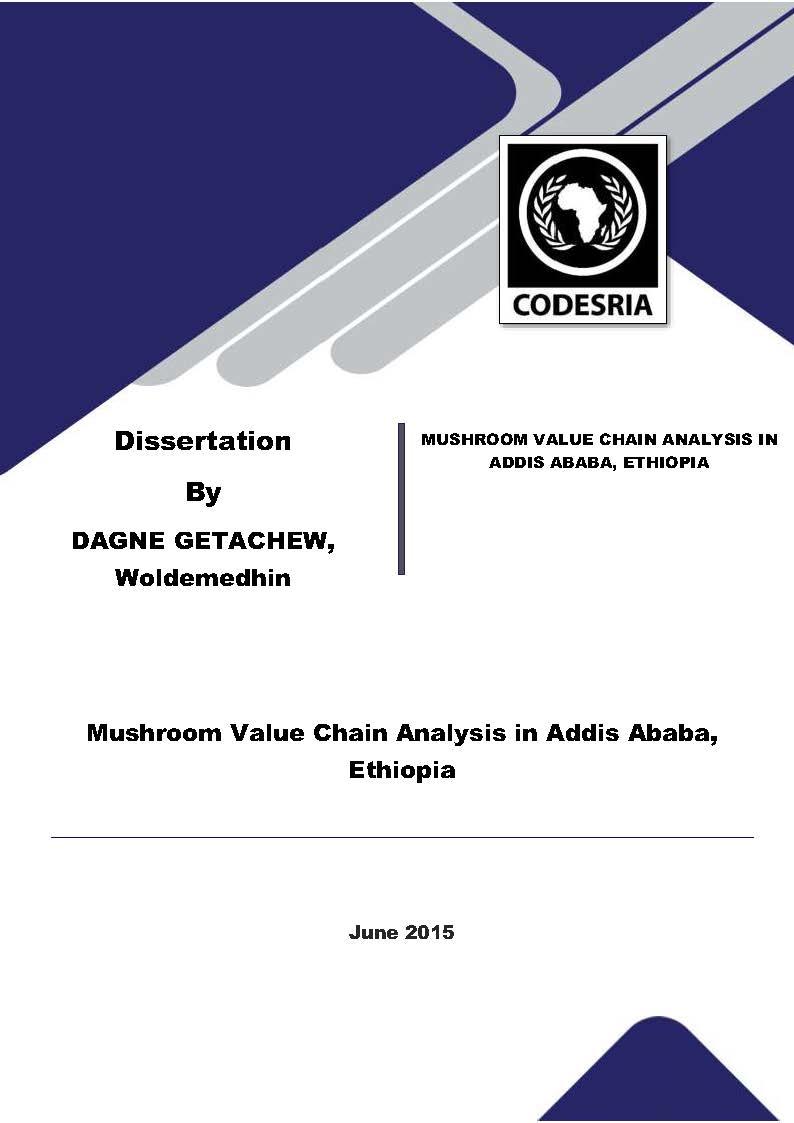Mushroom Value Chain Analysis in Addis Ababa, Ethiopia
Mots-clés :
Mushroom Value Chain Analysiis, Addis Ababa, Ethiopia, general objective, understand the mushroomSynopsis
MUSHROOM VALUE CHAIN ANALYSIS IN ADDIS ABABA, ETHIOPIA
In this study mushroom value chain analysis was conducted in Addis Ababa, Ethiopia. The general objective of the study was ta understand the mushroom value chain which helps ta identify what interventions will be needed in order ta make the sector more competitive in the domestic and export markets and thereby improve the livelihood of the urban people. Primary and secondary data were collected from 120 producers, 5 traders, 8 spawn suppliers, 6 supermarkets, 7 hotels and restaurants and 40 end users. For analysis descriptive and inferential statistics, alternative specific conditional !agit and Cobb-Douglas production function were applied. On average about 13,477.5 kg mushroom was produced per month by sampled producers with the productivity of 4.4 kilogram per bed. The average price of mushroom was range from 30.7 to 64 ETB per kilogram.
Mushroom value chain actors are input suppliers, producers, traders, processors and consumers. There are eight mushroom market channels in the study area. The highest and the lowest amount of the total value added were 171.87 and 20.77 ETB per kilogram, respective/y. Spawn suppliers play the greatest role in the distribution of input and output along the value chain. The structural conduct pe,formance of mushroom producers revealed the characteristics of bath monopolistic and perfect competitions. Whereas the structural conduct pe,formance for spawn suppliers had show the characteristics of oligopolistic market structure. Alternative specific conditional logit mode! estimates showed that alternative specific variables, volume of mushroom purchased and mode of payment are significantly determining the choice of alternative market. Case specific variables such as sole proprietor business type, marketing experience, primary and tertiary education level, continuous production, being licensed and the amount of credit are significantly affecting the choice of alternative markets relative to the base alternative market. Cobb-Douglas production fimction result also shows that clzemical pasteurization and the quantity of spawn were significant at 1% level. Cast of spawn was also significant at 5%, while being partner business type; extension
access and experience were significant at 10% level. Based on the results it can be concluded that, demographic, cultural, socio- economic and institutional factors influence mushroom value chain. Higher educational and research institutes release of suitable mushroom production technologies and scale up may contribute for the commodity development. Relevant governmental bodies need ta create awareness about the nutritional and medicinal values of mushroom, generate
market information, ta facilitate licensing, ta establish standard and quality contrai mechanisms and link produters ta potential market.
Téléchargements






